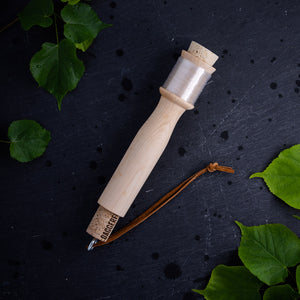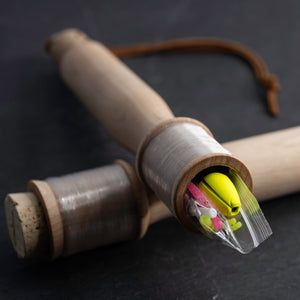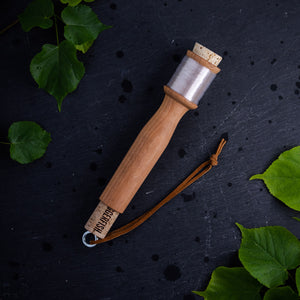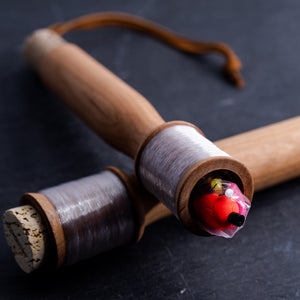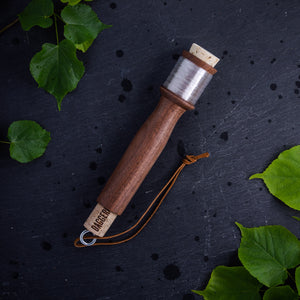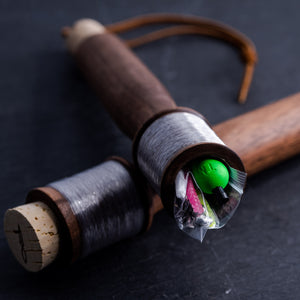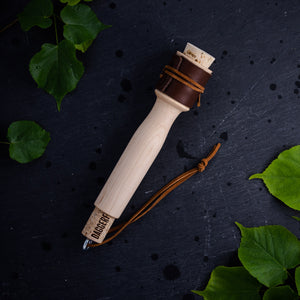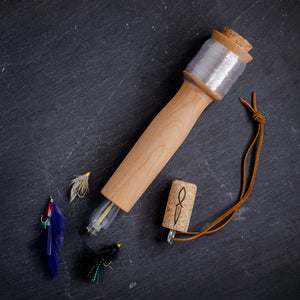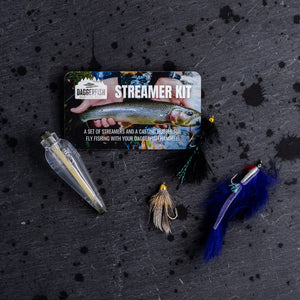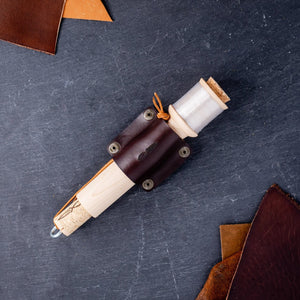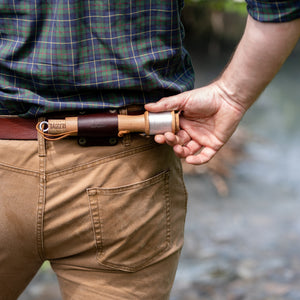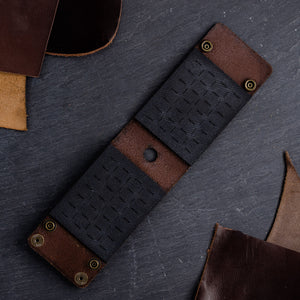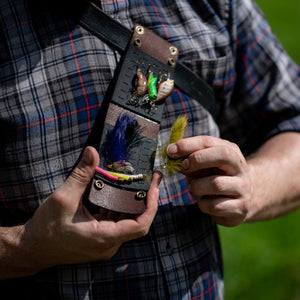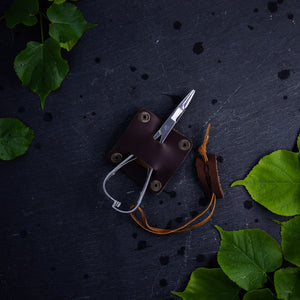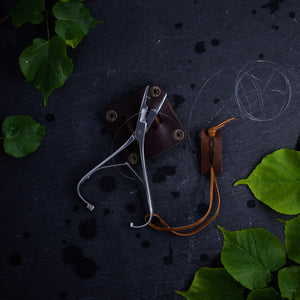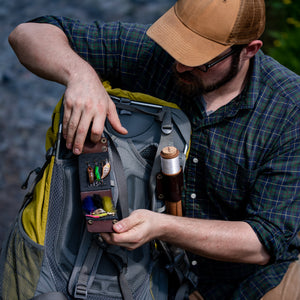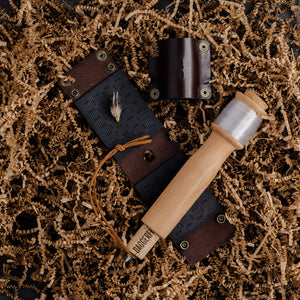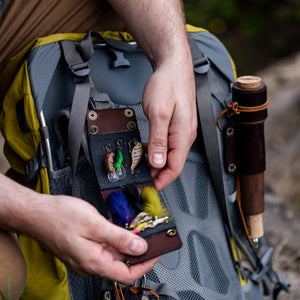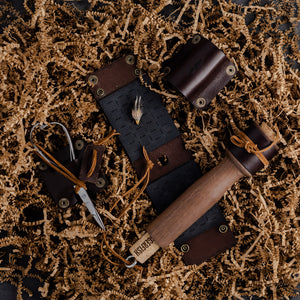The Basics: Fishing with the Daggerfish, Straight Out of the Box

Adam Nelson
Founder of The Daggerfish Gear Co.
The Daggerfish is a wonderful way to get started fishing, in part because you can take it out of the box and begin fishing immediately. Without buying any additional tackle, you can use the Daggerfish to fish in almost any lake, stream, or pond. Let’s see how.
Basic Bait Fishing with Live Bait
The obvious difference between a Daggerfish and a traditional rod and reel is that there’s no rod, which presents both opportunities and challenges. But at their core, a traditional rod and a hand reel are functionally the same: both have a hook, line, and reel to take in the line.
Each Daggerfish comes with a lead-free tackle kit that includes a few basic hooks, a heavier jig-head hook, split-shot sinkers, rubber grubs, and a small float. Using these, we can set ourselves up to fish in a couple different ways.
The simplest and one of the most effective ways to fish is a basic suspended bait fishing setup using live bait. In this setup, we:
- Tie one of our basic hooks to the end of the line (try one of these knots).
- Attach one or more sinkers 8-12 inches above the hook.
- Affix the float another 8-12 inches above the sinker, depending on the depth of the water.

Once your rig is set up, thread your bait onto the hook, cast your line into the water, and watch carefully for a strike.
We can also use this setup to do spin fishing with the included rubber grubs and jig head hook. Choose a color for your grub, feed the hook through the grub body and bring it out between the split at the tail, the attach the jig head hook to your line.
Cast into the water and allow the bait to float with the current, or slowly reel in the line, giving the occasional tug with the line-hand to twitch the bait forward in the water.
Casting
With a little weight added to the line and a bit of practice, we can use the Daggerfish to cast with distance and accuracy similar to a traditional fishing rod. Casting distance has more to do with weight than leverage from the rod, at least in most circumstances. We cover three methods of casting in this video:
The Flick
The flick cast is great for fishing a short rig in a tight space. Since the line doesn’t swing behind you, you can use the flick when you have very little room to work with.
- Wind the line up until the tackle is adjacent to the reel.
- Hook your finger on the line just above the tackle, swing your arm forward, and release your finger to allow the line to unspool off of the end of the hand reel.
The Toss

The Toss is a gentler cast great for fishing with live bait, where more forceful casts might cause the bait to slip off the hook.
- Holding the handreel in one hand, collect the tackle in the other. I often find it useful to keep the hook outside of my hand to prevent the line from tangling.
- Using a scooping motion, toss the tackle into the water, pointing the handreel forward to allow the line to unspool.
The Whip

The whip cast (or bola cast) is the best cast for distance. You can use a whip to cast a properly weighted rig comparably to a traditional rod and reel.
- With a weighted bobber, sinkers, or a casting bubble affixed to the line, hold the handreel in one hand and the line in the other, with the arm outstretched away from your body.
- Holding the line a 6-12 inches above the weight, spin the line around and toss the line forward out into the water.
- Note: Be conscious of your own body position and of any people nearby - you are swinging a sharp hook, after all. Once you’ve gained proficiency, you can also use this technique above your head, which can be very useful when fishing from a canoe, kayak, or other boat.
Reeling and Setting the Hook
When reeling a Daggerfish, we use one hand to guide the line onto the reel, and rotate the other hand to wind the line.
Be careful not to let the line slip below the reel - placing the thumb and finger at the base of the reel can help.

There’s no need to grip the line hard, or to use the line hand to wrap the line around the reel - rotating the reel hand at the wrist creates some leverage and makes it quick and easy to wind the line.
Setting the hook
If there isn’t much slack in the line, your hook set is only a few inches, which you can achieve easily with a quick strip of the line using the line hand, or a quick jerk on the handreel.
If slack is present, spreading your arms and twisting your body to draw the line back can take up 6 to 10 feet of line and set the hook; once the hook is set, keeping tension on the line with the line hand and allowing the line to feed out as the fish runs can keep the fish on the line.
And that's it! With a couple simple techniques and a little practice, you can be fishing with your Daggerfish right out of the box in just a few minutes. Be sure to check your state's regulations on fishing - here's a list of where to get a fishing license in every state
Beyond the Basics
Now that we’ve covered the basics of using the Daggerfish, let’s see what else we can do with this portable fishing rod. By adapting techniques from spin fishing and fly fishing to handlining, we can go after more kinds of fish in a broader variety of situations. Take a look:


